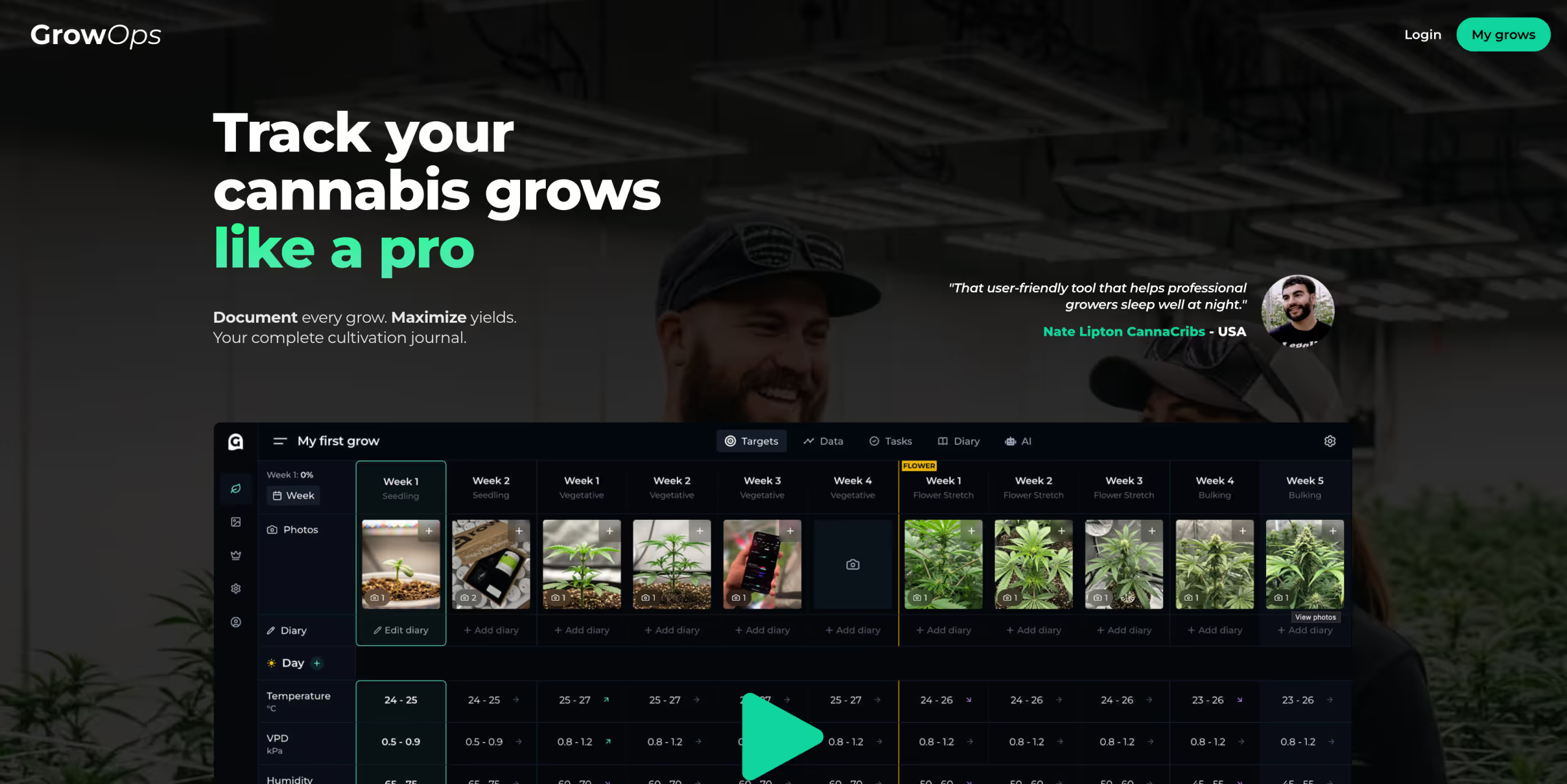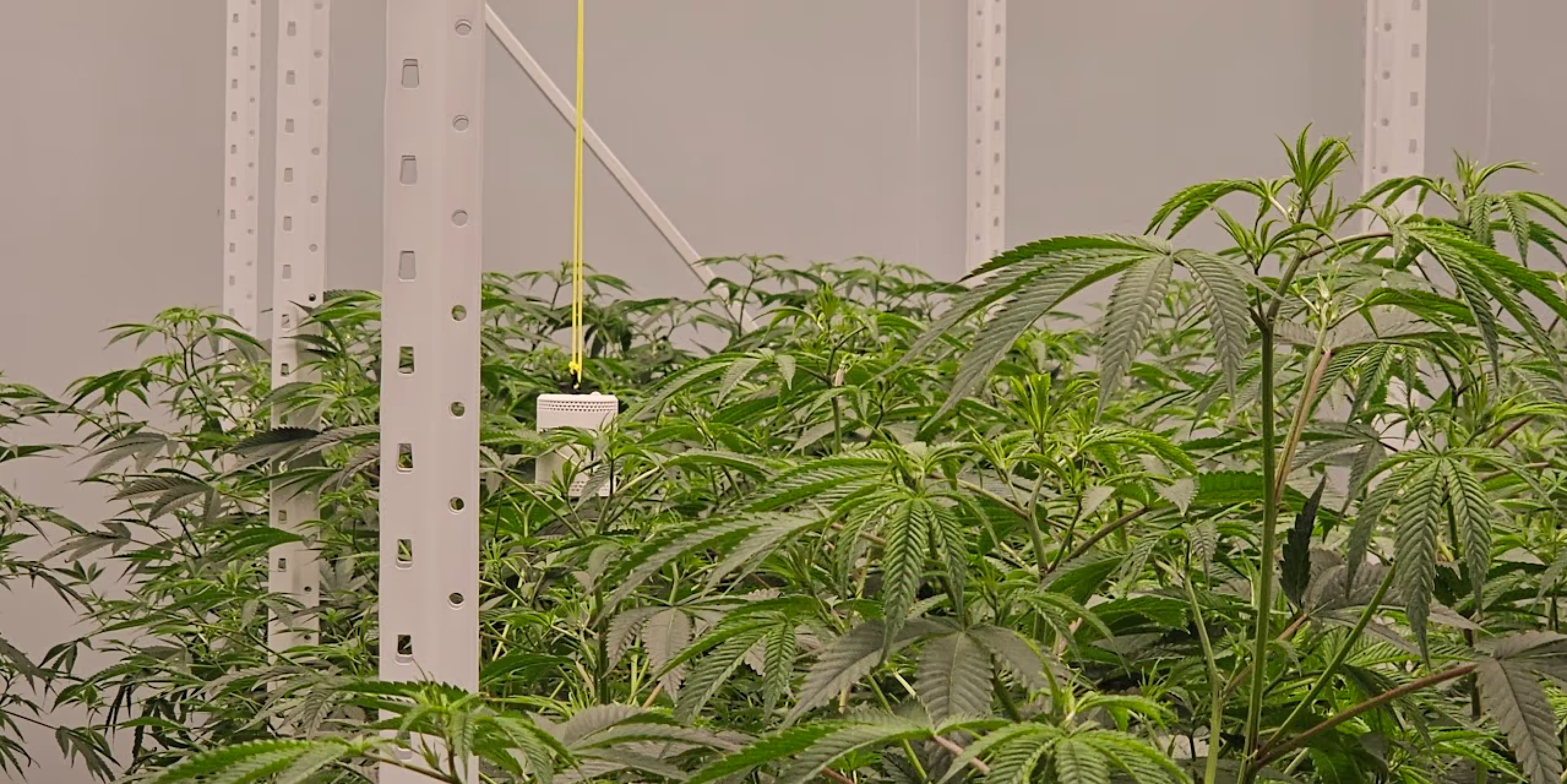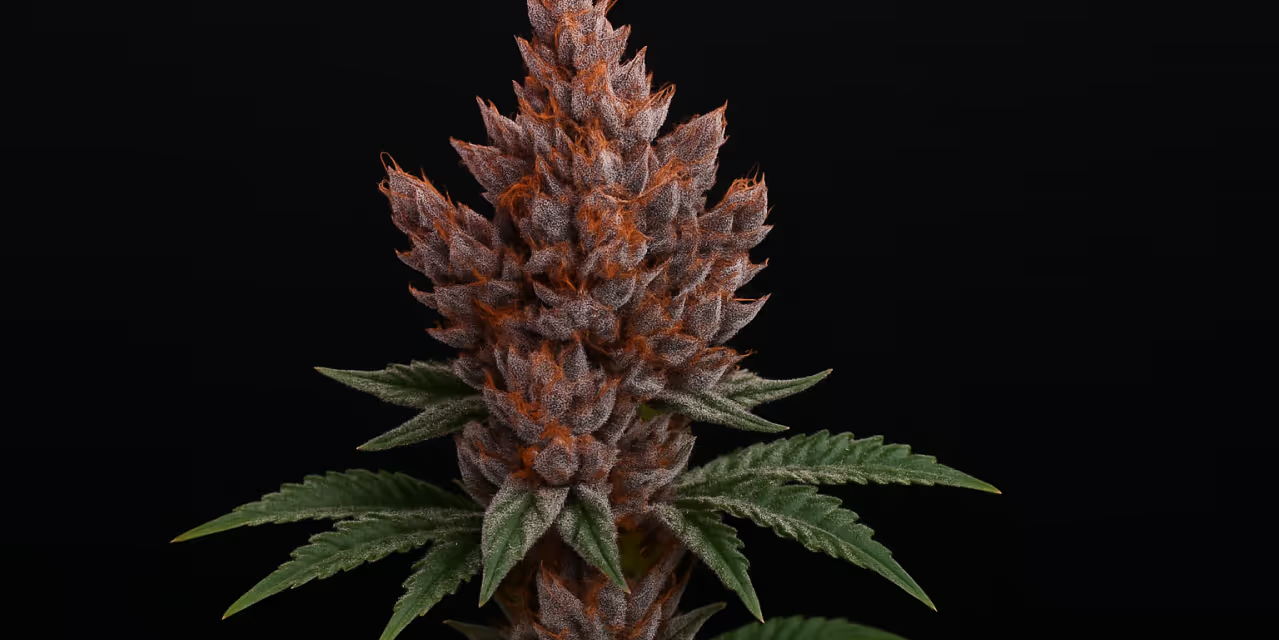Potassium deficiency in cannabis: Expert tips and advice


Potassium deficiency in cannabis can be a real problem, and if left unchecked, it can devastate your crop.
Without the right knowledge and action, this common but often misunderstood issue can lead to weak stems, yellowing leaves, poor bud development, and, ultimately, a disappointing harvest.
But don't worry – you've come to the right place.
In this post, we’ll guide you through recognising the early signs, understanding the causes, and applying effective treatments to fix potassium deficiency in your cannabis plants.
By the end, you'll have the expert knowledge you need to prevent this problem and ensure a healthy, thriving grow.
Disclaimer: Any information given on this site is for educational purposes only. Please ensure if you’re growing cannabis, you’re doing so by the law and subject to appropriate permissions and licenses of the applicable country.
Understanding potassium deficiency in cannabis plants
Potassium is essential for many biological processes and metabolic processes in cannabis plants.
It’s essential for nutrient transport, water regulation, and enzyme activation.
Potassium plays a critical role in photosynthesis and overall plant health, helping to produce the energy needed for growth and flowering.
Potassium deficiencies disrupt these processes, affecting growth and development and the plant's ability to grow and produce healthy flowers.
When potassium is lacking, your cannabis plants struggle to absorb other nutrients, leading to a cascade of nutrient deficiencies.

Cannabis potassium deficiency symptoms
Recognising the symptoms of potassium deficiency is crucial for taking quick action. Key signs to watch for include:
Yellowing leaves
A common symptom is when leaves start to turn yellow, especially around the edges. This symptom may progress to a scorched appearance with brown, crispy edges.
Browning and curling of leaf tips
Leaf tips and edges may curl and turn brown, often misinterpreted as nutrient toxicity or excess potassium.
Weak stems
Potassium deficient plants often have weak stems that struggle to support the weight of buds, leading to poor bud development.
Slow growth and stunted development
If your cannabis plants are not growing as expected, especially during the d flowering stage, low potassium levels might be the culprit.
These deficiency symptoms are often similar to other issues like nutrient burn, but potassium deficiency typically shows distinct patterns.
The key difference is that potassium deficiency often starts with older leaves and moves upward, while other issues might affect newer growth first.
The leaves, particularly the older ones, may show signs of browning leaf tips and curling.
Additionally, the deficiency may cause yellowing in patterns that progress from the leaf edges inward, distinct from the burning patterns caused by excess light or nutrients.

Diagnosing potassium deficiency
To accurately diagnose potassium deficiency, you need to evaluate both the symptoms and the environment in which your cannabis plants are growing.
Start by checking for visible signs, such as the yellowing and browning of older leaves, weak stems, and curling of the tips of leaves.
Test the pH levels
If your medium is too acidic or alkaline, your cannabis plant may not be able to absorb potassium.
Use a pH meter to test the soil pH or the pH of your growing medium. Cannabis plants generally thrive in a pH range of 5.5 to 6.5.
If the pH is outside this range, Potassium uptake could be affected, meaning your plant may not be able to absorb potassium properly, leading to a deficiency.
Check for nutrient lockout
Sometimes, excess nutrients (like calcium or magnesium) can prevent potassium absorption, a situation known as lockout.
Examine the medium for any salt build-ups or signs of excess nutrients.
Nutrient solutions lacking potassium or improperly balanced can lead to deficiencies. Always use high-quality, potassium rich fertilisers suited for cannabis plants.
Observe environmental conditions
Factors like extreme temperatures, high humidity, or light stress can increase the plant's nutrient demand, causing a deficiency if the nutrient supply is inadequate.
Unchecked environmental factors exacerbate potassium deficiency or cause similar symptoms.
Using a grow room monitor like the Grow Sensor, you can ensure your growing environment is within the optimum range for cannabis cultivation.
Get expert growing advice – sign up for the Grow The Best newsletter now!

Addressing potassium deficiency in cannabis plants
Once you've diagnosed potassium deficiency, it’s time to fix it. Here’s a step-by-step guide to effectively treat potassium deficiency in cannabis:
Adjust the pH level
Start by testing and adjusting the pH of your medium to ensure it’s within the optimal range (5.5 to 6.5).
This step is critical for allowing sufficient potassium uptake. To make precise adjustments, use pH-up or pH-down solutions.
Flush the growing medium
If you suspect nutrient lockout due to excess salts or other nutrients, flush the medium with clean, pH-balanced water to remove any build-up (if growing in soil).
This process will help reset the soil's nutrient profile, boost potassium availability, and improve the uptake of nutrients.
Use cannabis specific fertilisers rich in potassium
Apply fertilisers containing potassium sulfate or, if you’re growing organic cannabis, options such as wood ash and kelp meal.
These are excellent sources that provide the necessary potassium for your plants while also adding trace minerals and other essential nutrients.
Monitor and maintain optimal environmental conditions
Keep your growing environment within optimal conditions. Ensure adequate ventilation, proper temperature (28°C in veg and early flower reducing to 22°C in late flower), and appropriate light levels.
Avoid light burn, which can exacerbate nutrient deficiency. This is a common problem!
Introduce beneficial microbes
Use products containing beneficial bacteria and fungi to enhance nutrient uptake, improve soil health and prevent potassium deficiency.
These microbes can help break down organic matter, making potassium and other nutrients more readily available to your plants.
Avoid overfeeding
Be cautious not to overdo it with potassium heavy fertilisers. Excess potassium can cause toxicity, leading to symptoms similar to those of deficiency, such as browning at the tips and edges of the leaves and lockout.

Preventing potassium deficiency in cannabis plants
Prevention is always better than cure. Here are some preventative measures to help you avoid potassium deficiency in your cannabis plants:
Regular pH testing
Consistently check and maintain the pH levels of your medium within the optimal range. Regular testing helps you catch potential pH problems before they lead to deficiencies.
Balanced nutrient solutions
Use a balanced nutrient solution that provides all the appropriate nutrients, including potassium, in the right proportions.
Ensure the nutrient solution suits your plants' current growth stage (vegetative or flowering phase).
Flushing and maintenance
Periodically flush your growing medium with clean, pH-balanced water to prevent nutrient lockout and salt build-up.
This practice keeps the medium fresh and ready for optimal uptake of nutrients.
Monitor plant health and growth
Regularly inspect your cannabis plants for signs of stress, nutrient deficiencies, or environmental problems.
Addressing issues early can prevent them from escalating into more severe problems.
What happens if you give your cannabis plant too much potassium?
If you give your cannabis plant excessive potassium, it can lead to a condition known as cannabis potassium toxicity.
This situation is harmful because excessive potassium can disrupt the plant’s ability to absorb other essential nutrients, like calcium and magnesium, causing nutrient lockout.
Symptoms of potassium toxicity include browning leaf tips, stunted growth, and overall poor plant health.
If you suspect excess potassium, flush your medium with pH-balanced water and adjust your feeding schedule accordingly.

Takeaways
Potassium plays a crucial role in plant growth, so dealing with a potassium deficiency can seem daunting.
However, with the right knowledge and actions, it’s a problem cannabis growers can effectively manage and prevent.
By understanding the symptoms, causes, and treatment options, you’ll be well-equipped to keep your cannabis plants healthy and thriving.
Don’t overlook the importance of potassium and its interplay with other vital nutrients like calcium, magnesium, nitrogen and phosphorus.
Remember to maintain optimal conditions, monitor nutrient levels closely, and take a balanced approach to feeding to avoid both deficiency and excess. Your plants will thank you with a bumper yield!
Happy growing!
FAQs
How to tell if a plant needs potassium?
Look out for a range of symptoms that can indicate marijuana potassium deficiency in your plants.
The most common signs are yellowing and browning of leaves, particularly on the older leaves.
This yellowing often starts at the leaf edges and progresses inward, accompanied by curling leaf tips and a scorched, crispy appearance.
Unlike other nutrient deficiencies, which may first cause discolouration in newer leaves, potassium deficiency typically affects the older leaves at the bottom of the plant.
As the deficiency worsens, the leaves may start turning yellow or even develop brown spots.
This can lead to the tips and edges of leaves turning brown, which can be mistaken for other issues like light burn or nutrient burn.
However, the yellowing caused by potassium deficiency is often patchy and uneven, whereas nutrient burn usually shows up as uniform brown tips across many leaves.
You might also notice weak stems that are unable to support the plant's weight, especially during the flowering stage.
This weakness is due to the plant's inability to transport nutrients efficiently when potassium levels are low.
As a result, growth may slow down significantly, leading to stunted growth and poor overall development.
Poor bud development is another critical symptom; buds may be smaller, less dense, or take longer to mature.
What is the best source of potassium for cannabis plants?
Organic sources such as wood ash, kelp meal, and potassium sulfate are excellent sources of potassium for cannabis plants.
What is the quickest way to increase potassium levels?
The quickest way is to apply a potassium rich fertiliser or amendment directly to the growing medium, such as potassium sulfate or a well-balanced nutrient solution.
Can you reverse potassium deficiency?
Yes, if caught early, potassium deficiency can be reversed with appropriate care, including pH adjustments and proper fertilisation.
How long does it take to fix potassium deficiency?
Fixing potassium deficiency in cannabis can take anywhere from a few days to a couple of weeks, depending on the severity of the deficiency and how quickly you act to correct it.
If you identify the deficiency early and make the necessary adjustments, such as correcting the pH levels, flushing the growing medium to remove any nutrient lockout, and applying potassium-rich fertilisers, you may start to see improvements in your plants within a few days.
New growth should appear healthier, and the yellowing or browning of leaves should slow down or stop.
However, in more severe cases, where the deficiency has significantly affected the plant, it could take a couple of weeks or more for the plant to fully recover and resume normal growth patterns.
The key is monitoring your plants closely, ensuring they have optimal growing conditions, and adjusting your nutrient regimen to support recovery.
Want to grow like a pro? Subscribe to the Grow The Best newsletter!









.avif)








